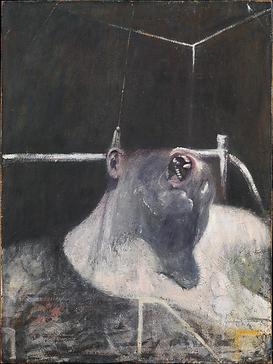Head I
Head refers to the upper part of the human body or the front part of the body in animals, typically separated from the rest of the body by a neck. The head contains the brain, mouth, eyes, ears, nose, and throat. It plays a crucial role in many functions, including sensory perception, cognition, communication, and ingestion.
Structure[edit | edit source]
The human head consists of a skull that houses the brain and forms the face. The skull is made up of several bones that are fused together, except for the mandible (lower jaw), which is movable. The face includes the forehead, eye sockets, cheeks, nose, mouth, and chin. The main sensory organs responsible for vision (eyes), hearing (ears), smell (nose), taste (tongue), and touch (skin) are all located in the head. The head also contains the brain, which controls most of the body's functions.
Brain[edit | edit source]
The brain is the central organ of the human nervous system, enclosed within the skull. It is responsible for thought, memory, emotion, touch, motor skills, vision, breathing, temperature regulation, and many other functions.
Sensory Organs[edit | edit source]
The head houses several sensory organs:
Function[edit | edit source]
The head's primary functions include housing the brain, which controls the body, and supporting the sensory organs to interact with the environment. It is also essential for communication, both verbal through the vocal cords in the larynx and non-verbal through facial expressions made by the facial muscles.
Clinical Significance[edit | edit source]
Injuries to the head can be particularly dangerous due to the presence of the brain. Conditions such as concussion, traumatic brain injury, and skull fractures require immediate medical attention. Diseases affecting the head include migraines, sinusitis, and various types of cancer affecting the brain or other tissues.
Cultural Aspects[edit | edit source]
The head is considered a significant part of the body in many cultures, often associated with identity and emotion. In art and literature, the head is a common symbol of knowledge, power, and identity.
Translate: - East Asian
中文,
日本,
한국어,
South Asian
हिन्दी,
தமிழ்,
తెలుగు,
Urdu,
ಕನ್ನಡ,
Southeast Asian
Indonesian,
Vietnamese,
Thai,
မြန်မာဘာသာ,
বাংলা
European
español,
Deutsch,
français,
Greek,
português do Brasil,
polski,
română,
русский,
Nederlands,
norsk,
svenska,
suomi,
Italian
Middle Eastern & African
عربى,
Turkish,
Persian,
Hebrew,
Afrikaans,
isiZulu,
Kiswahili,
Other
Bulgarian,
Hungarian,
Czech,
Swedish,
മലയാളം,
मराठी,
ਪੰਜਾਬੀ,
ગુજરાતી,
Portuguese,
Ukrainian
Navigation: Wellness - Encyclopedia - Health topics - Disease Index - Drugs - World Directory - Gray's Anatomy - Keto diet - Recipes
Search WikiMD
Ad.Tired of being Overweight? Try W8MD's physician weight loss program.
Semaglutide (Ozempic / Wegovy and Tirzepatide (Mounjaro / Zepbound) available.
Advertise on WikiMD
WikiMD is not a substitute for professional medical advice. See full disclaimer.
Credits:Most images are courtesy of Wikimedia commons, and templates Wikipedia, licensed under CC BY SA or similar.Contributors: Prab R. Tumpati, MD

